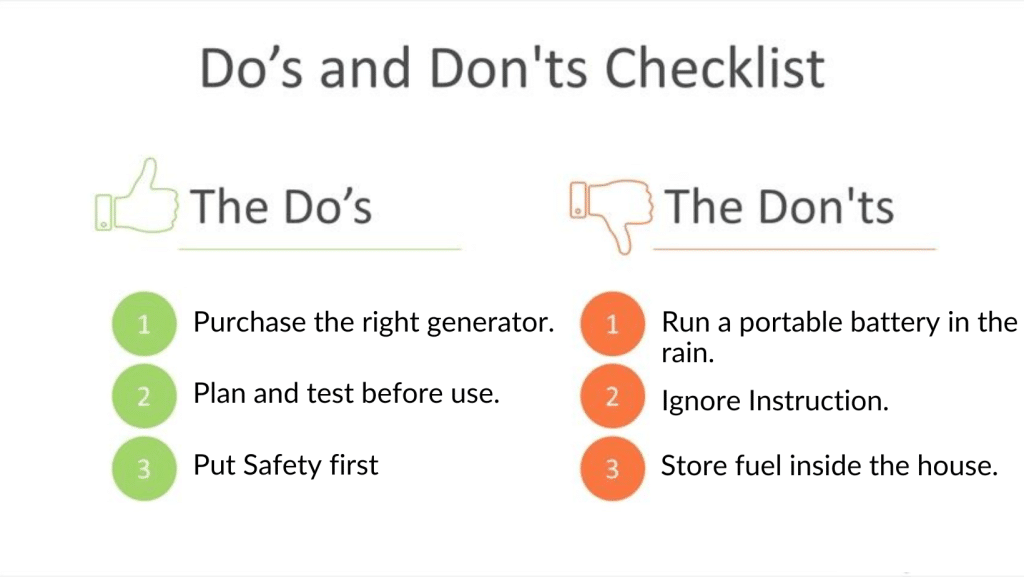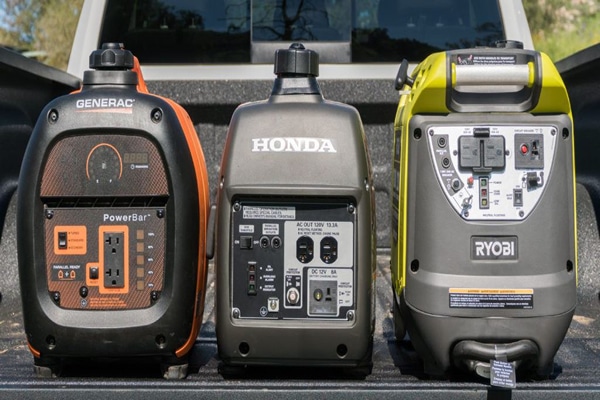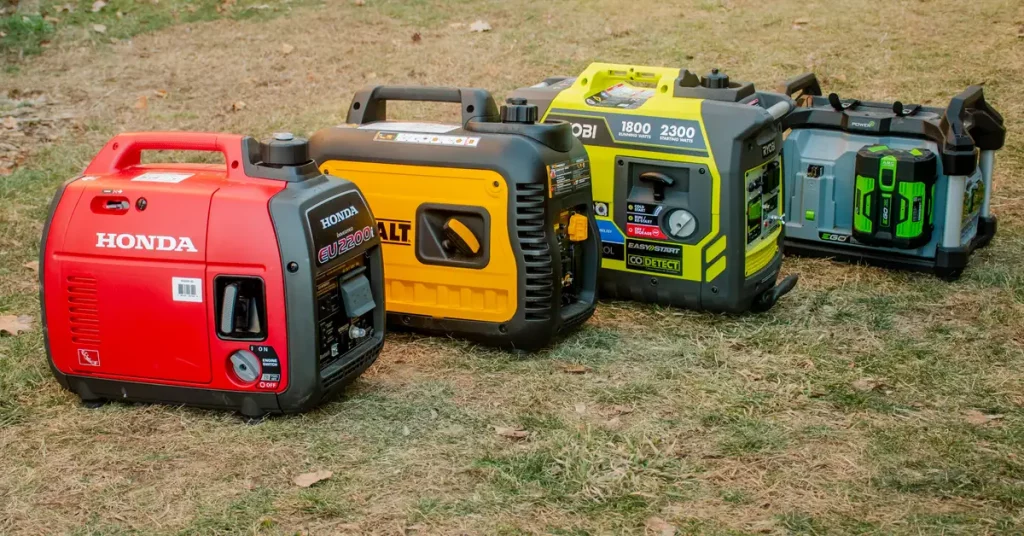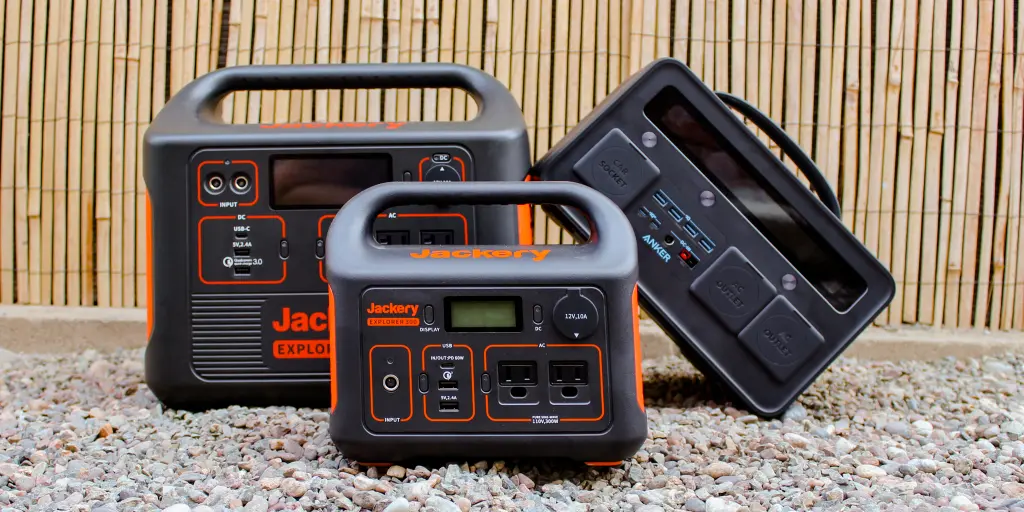We all depend on our powerful generators for our home emergency backup power. During power outages, a generator can keep our house cool in summer and warm in winter. Inverter generators for home use can supply power to vital electronic devices when you’re facing a blackout.
Outside the home, small backup generators can provide power for TVs, small appliances, power tools, and lights, in short, all household appliances.
People tend to buy generators around emergencies like major storms or cyclones, That’s when they are prone to making a desperate decision—without a plan for what to do when they get it home.
Working by flashlight, in a rush to get the power up and running, they might skip over critical safety steps during setup. But most of the time we forget the fact that people die every year from carbon monoxide poisoning related to generators.
So if you don’t want to be one of those people, I suggest you read through my blog post and know the things that you need to know before splurging your money on a generator. (souce)
Yes, You Need a Generator Buying Guide
Portable generator comparison charts provide useful information for customers. By going through the charts, it is possible to purchase the most useful inverter generator for your needs rather than conventional generators.
When there are numerous models in the market- dual-fuel generators, and gas-powered generators, it is difficult to figure out the best for your needs. In this context, you should want to go through the information, evolution, and comparison compiled by experts to help you shop smart.
The features, price, benefits, and pros and cons of various portable generators are compared on review websites. Hence, it is very much important to go through portable inverter generator comparison charts presented on review sites so that you can make the most from your investment.
Benefits of Portable Generator Comparison
I like to categorize portable generators into low, mid, and high-range with regard to their running watts. There is no official category for portable generators, so what I say goes!
Some generators work efficiently by consuming less fuel and delivering great output for many numbers of hours. Or at least on this portable generator reviews site.
The most popular portable generators are in the mid-range. Those that are the most versatile for most uses you would need for your home. That’s why a portable generator comparison chart was made to easily compare the portable generators.
The low-range portable generators will serve the purpose of powering the barest essentials in a power failure, or be handy as an on-site power source for single power tools or keeping your food warm while tailgating. And of course, the low end is the most affordable.
The high-end is useful in hooking up to your home’s power during a power outage and will run almost everything you’ll need including your sensitive electronics. But these are real investments at $1000 and above. So my categories are described as:
Low-range – up to 3000 running watt generators
Mid-range – between 3000 and 7000 running-watt generators
High-range – over 7000 running watt generators
You will be able to purchase a generator that produces no noise or negligible noise levels. Thus, you will enjoy great peace of mind over the investment that you will make in a portable generator.
Generator Buying Guide

Know Your Power Priorities
Firstly, you need to know the amount of power output you need from your home generator. Generators are sold by power output, as measured in watts. The amount of power they deliver determines how many common appliances you can run at once.
The quality and consistency of cleaner power a generator produce determine how well it’ll run. Typically to cover the basic needs of a home, I suggest you get a generator in the 2,200-watt range to 4000 watts power rating.
Or you can make a list of things that you want to run with a generator when the power is down. Then add up their watts to get a ballpark figure of the wattage range that you need.
Here are some rough numbers for common home appliances.
- Refrigerator: 600 watts
- Microwave: 600 to 1200 watts
- Sump pump: 750 to 1,500 watts
- TV: 150 to 300 watts
- Portable heater: 1,500 watts
- Window air conditioner: 1,000 watts
- Lights: 60 to 600 watts
- Computers: 60 to 300 watts
One tip that will make prioritizing easier is determining which outlets and appliances are controlled by each circuit breaker in your panel and labeling them accordingly.
The easiest way: is a small electric device called a digital circuit breaker finder, which you can buy for less than $50.
Pick a More Compatible Type
You can choose from four options:
1. Home Standby Generators

- These units cost the most money and should be installed by a professional. An experienced electrician can help with town or municipal permits, sound level, and proper location.
- These start automatically when the power goes out, and typically supply more power than the other four options. You can run every home appliance- TV, refrigerator, microwave, coffee maker, mobile device, etc. smoothly.
- They have a self-diagnosis option and let you know when maintenance is needed.
- With this generator, you have your choice of fuel. For my home standby generator, I prefer propane. It is less risky to store than gasoline (which is required for the other models here). You can also use natural gas. And a single tank of gas provides an unlimited supply of power.
- They usually have a starting watt of 5,000 to running watts of 20,000.
Typical cost:
$2,000 to $7,500 without installation, which can double these prices.
2. Portable Generators

- They typically run on gasoline that you may need to store in large quantities.
- A stabilizer must be added to the fuel tanks to keep the fuel fresh for prolonged storage.
- You can use portable generators anywhere on or off your property. But you can not use it in an enclosed space. These models tend to produce deadly levels of carbon monoxide. So it’s important to run a portable generator at least 20 feet away from your home.
- These generators come in so many sizes and shapes. You can also get RV ready portable generator for camping. Also, these are perfect for job sites and construction sites.
- You need to get weatherproof covers for this type as it stays outdoor. If it’s raining, shield your generator with a canopy designed for your particular model.
- Most of these generators have the Eco-Throttle switch that allows the motor to run at optimum engine speed to match the electrical load to save fuel and reduce the noise level.
- Several of these models offer electric starting. The battery bank required for electric start, however, may need to purchase separately.
- Typically can handle 3,000 to 8,500 watts consistent electrical load.
Typical cost:
$400 to $2,500
3. Inverter Generators

Cost a lot more than traditional portable generators because their engines are more complex.
- Inverter generators are much quieter (usually 48-78 decibels) than their conventional counterparts because they throttle up and down to match demand rather than run at full power all the time. They also have more sophisticated exhaust systems which also help tamp down the noise.
- They are more fuel-efficient and produce fewer emissions, but you should still follow all the same safety features you would with a portable generator.
- Low Maintenance Simply keeps it plugged into the wall or solar panel to extend battery life.
- Typically provide from 1,500 to 6,500 watts.
Typical cost:
$300 to $4,000
4. Portable Power Stations

They have large battery types that store electricity for when you need it. The best and only option for someone who lives in an apartment and has no way to safely run a generator outdoors.
- These devices don’t use gas or propane—they’re powered by a battery that you can charge by plugging into an electrical outlet or, sometimes, an included solar panel (you might also see them called “solar generators”).
- Portable power stations are relatively new to the market, and they typically cost more than portable gas generators.
- For those concerned about noise, note that these devices are extremely quiet, as they have no engine.
- These can power phones, laptops, camera equipment, portable fridges, medical devices, TVs, and more. And can also run fridges, lights, medical devices, and other essentials, all with the flip of a switch or the push of a button.
- They don’t produce fuel emissions/carbon monoxide, so you can use them indoors.
- Don’t expect to power as many appliances or run them for an extended period of time, since they don’t output as much power as portable generators and you can’t keep them running without recharging them, either with electricity or solar power.
- There are no issues with starting because there’s nothing to start—think of these power stations as a large battery pack for your cell phone.
- Models we test provide from 1,200 to 1,500 watts.
Typical cost:
$750 to $3,000
Don’t Cut Corners When It Comes To Safety
Read the owner’s manual and instructions for your portable generator. Carefully follow all instructions and warnings to safely start and operate the generator.
*The following tips are merely supplemental and aren’t intended to substitute reading the owner’s manual*
Carbon Monoxide and Ventilation
The exhaust from fuel-powered generators ( gasoline, propane, and diesel generators) produces deadly carbon monoxide (CO) gas you can’t see or smell. So DO NOT run one of these generators indoors or in partly enclosed areas such as garages. Using a fan or opening doors and windows won’t provide sufficient ventilation. You need to keep at least 20 feet away from home – far from windows, doors, vents, and crawlspaces. Even outdoors make sure to keep them in an area where adequate ventilation is available. Also, make sure your home has properly installed carbon monoxide detectors.
Features to Consider
Consider these options to get the best generator for your needs.
Automatic CO Shutoff
A portable generator must have this feature and pass CR’s safety tests, to earn a spot on our list of CR-recommended generators. This critical safety feature shuts down a generator’s engine automatically if the CO sensor (built-in) detects levels of the deadly gas piling up to certain levels. More brands than ever offer models with this CO safety shut-off technology, including heavyweights like Generac, Honda, and Ryobi.
Look for the terms “CO Guard,” “CO Protect,” “CO Detect,” “CO Shield,” or “CO Sense” to verify whether a generator meets one of these two references on the packaging:
• ANSI/UL2201 Certified for Carbon Monoxide Safety
• ANSI/PGMA G300 Certified Safety & Performance
Start Options
Automatic Start
This is great if you travel a lot or work far from home, and can’t always get there quickly in an emergency. The generator will automatically start when the power goes off.
Electric Start
Several portable models offer this push-button alternative to the hassle of pull-starting the engine. It makes powering your generator easy, anyone can do it.
Fuel Gauge
This is a great feature, especially during long blackouts. Allows you to check at a glance how much fuel remains in your portable generator.
Alternative Fuel Capacity
Most portable models run only on gasoline, though some come equipped to run on a propane tank or natural-gas line and others can be converted with kits.
Low-Oil Shutoff
This is a must-have feature when considering buying a generator. This shuts the generator down if oil falls below minimum levels. This prevents engine damage. Typically a standard feature on stationary generators, it’s increasingly common on portables.
Multiple Power Outlets
Four or more power outlets allow you best use the wattage by spreading the load, though we recommend using these only in an extreme pinch at home, or for when you’re away at a campsite. See the next section on transfer switches.
Removable Console
This connects to the generator so you can plug in appliances without running (potentially risky) extension cords outdoors.
Warning
Yes, You Need a Transfer Switch
It changes the load from one source of electricity to the other. In the case of portable generators, it changes the mains electricity supply directly to the generator and vice versa.
Thus a transfer switch prevents having two power sources feeding into the circuit at the same time. Cause that is extremely dangerous and can even be deadly.
In the United States, a transfer switch is a legal requirement for portable generators hooked up to a home or other building type.
But DO NOT attempt to install a transfer switch yourself. Installation of a transfer switch may require local permits but always requires a professional electrician. The transfer switch model will depend mainly on the size of your generator.
